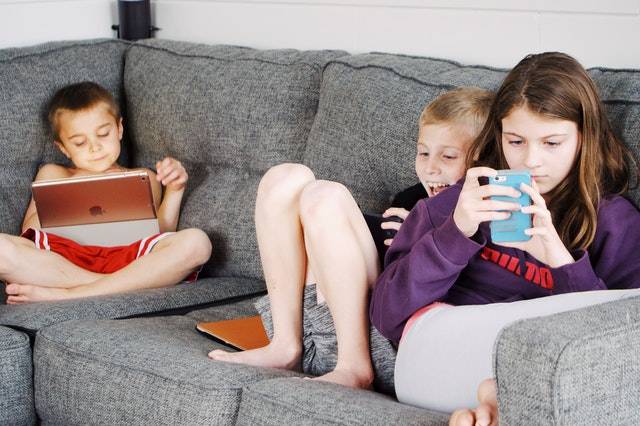The Complete Social Media Guide for Parents

Parents today are probably envious of the parents of the past. It is especially the case for those from a couple of decades ago. Lives were simpler. Raising children was arguably easier too. It is also true that today, handy conveniences and services do exist for parents of the present. Something as simple as the ease of changing a baby’s diaper was unthinkable only two generations ago. Nanny services, daycares, and the iPad (or any other mobile device; we’re not picky!) have revolutionized and eased the way parents handle their parenting tasks. But these same services and conveniences do come with additional effort and monitoring, which can be stressful in the best of days, and socially and mentally crippling at their worst.
And this doesn’t just end with babies and toddlers. The caveats that arise with raising children— especially in the digital age—are plenty, and sometimes, quite tough to navigate. Most parents realize this quite late when their children have transitioned into pre-teens or adolescents. But it’s critical to be well-equipped from the day children are given independent digital devices. Most parents now opt for the best apps for kids monitoring to keep tabs, and while that is a great way to keep your children safe, it’s important to know the basics, too.
Today, social networking is hugely popular. From a very early age, children become sophisticated in their utilization of social media applications and websites. And despite its numerous universal advantages, social media—like all forms of public communication—comes with some risks. Parents need to know that not all risks transform into actual problems. But even then, by helping your child understand the associated risks, you can play a big part in preventing the risks from turning into problems.
The Benefits of Social Media
Social media has many benefits for children and young teenagers. Here are a few of them:
Keeps Contact with Friends and Family
Keeping in touch with people has never been easier, especially if distances between friends and family are great. Today, most social media apps allow you to add friends, share what’s happening in your life, and send direct messages to anyone on your contact list. It can promote the idea of socialization in children and keep them connected to the ones they love.
Taking Part in Activism or Charities
Social media has become a powerhouse for social change. Climate change protests, petitions, charities, and similar ones to decrease gun violence are recent examples. It makes social media the perfect medium to quickly and efficiently disseminate information and mobilize people. The spread of information has also seen a boost with the rise of trends on apps like TikTok and Instagram. These have, in turn, contributed to an increase in awareness and donations. Social media offers everyone a chance to get involved and a platform to share their voices and create change.
Getting in Touch with People with Similar Interests
The sheer number of people on social media today makes up for a pretty diverse crowd. Especially when specific niche hobbies and interests are concerned. Today, children who find it hard to connect with their peers due to varying interests can effortlessly meet people who are into the same things as them. Reddit, Facebook, Twitter, and Discord are popular places where children can follow topics and keep up to date with the things they are into. Everything from obscure anime shows to first-gen PlayStation games has significant cult followings.
Boosting Creativity by Sharing Ideas, Music, and Art
Wattpad and Commaful, and now Hemmingway, served as a haven for aspiring writers. Stories could be shared with ease and critiqued, and many teens joined these platforms for this very reason. Similarly, SoundCloud and Bandcamp allow the sharing and discovering of new music by aspiring DJs, rappers, and musicians. Flickr and Instagram serve as an art and photography portfolio for children and teenagers interested. Platforms like these encourage and enhance creativity among youths.
Building Self-expression and Identity
Self-expression and identity are some of the biggest reasons that make social media a sanctuary on social media for marginalized children and teens. Teens are statistically more likely to be suffering from mental health issues and may feel more comfortable expressing themselves on social media than in person. This can make social media a great space for the development and mental health of youths.
The Dangers of Social Media
Like most things, social media comes with its own set of dangers and downsides. Parents should be aware of how social media can affect children negatively. Below are a few downsides to know:
Cyberbullying
Cyberbullying may be a serious issue that will have an enduring impact on adolescents. Moreover, it may be troublesome to flee and forestall given the power to access social media twenty-four hours daily, seven days per week. Cyberbullying that targets a person’s race, ethnicity, gender, sexuality, religion, or incapacity could represent discrimination in some jurisdictions and will eventually involve enforcement.
Inappropriate Content
While the debate on forgoing privacy for personalized ads rages on, social media continues as a haven for advertisers. Apps that are specifically made for children have all sorts of advertisements too. Some of which can be age-inappropriate. And advertisers are getting better at this, providing enticing apps that look like a part of the game to lure children into paywalls. What’s worse, by clicking on ads, children could be exposed to even more age-inappropriate content like pornographic chat rooms.
Decrease in Face-to-Face Communication
A clear drawback of social media is that it could eventually decrease face-to-face communication. Without face-to-face communication, there may be an absence of emotional connections and unauthentic expressions of feelings. Once conferred with a state of affairs involving face-to-face communication, youngsters could become awkward and anxious. Face-to-face communication is a crucial life ability that can’t get replaced with an internet presence.
Addiction
Social media and smartphone addiction go hand-in-hand. Today, a lot of children have trouble going off-line and the always-connected nature of these devices means they’re always in the loop. According to AddictionCenter.com, “social media addiction is a behavioral addiction that is characterized as being overly concerned about social media, driven by an uncontrollable urge to log on to or use social media, and devoting so much time and effort to social media that it impairs other important life areas.” While, social media and smartphone addiction have yet to be officially classified, if you are noticing symptoms of addiction in your child’s social media usage it may be time to intervene.
Online Predators
All kinds of dangers exist on the web; however, online predators are perhaps the largest threat to your child’s safety. Mixing in with the children, sexual and other different predators use social media sites to stalk and prey upon children’s innocence while keeping a low profile. Predators could use attention, affection, kindness, and even gifts to steer a vulnerable kid into sexual or different inappropriate activities.
Apart from sexual predators, youngsters could be persuaded into sharing private information or downloading malware through phishing or smishing (SMS phishing) scams.
General Guidelines for Social Media Safety
It can be exhausting trying to navigate lengthy guides to ensure social media safety for your children. But the simple matter of fact is that the more you teach your child how to safely use social media, the better off they will be. Consider the following guidelines on getting started in your home:
- Privacy: Most apps and websites today are required to include specific privacy settings. Going over them can be a great place to start. And even though these aren’t foolproof, they are a starting point for protecting private information.
- Parental Controls: For games and applications your children use, look into the parental controls and decide for yourself what you do and don’t want your child exposed to.
- Think Before You Post: The internet is a big archive of tweets, articles, cat memes everything else that’s ever been posted. Educating your child on the permanent nature of their posts is a good practice. So it is always a good rule of thumb to think before posting.
- Have a Family Computer: Having a family computer in a common family room can make it easier for you to monitor social media and internet usage easier.
- Ad Blockers: By using ad-blocker software, you can limit your child’s exposure to age-inappropriate ads.
- Device Monitoring Apps: These are great to keep tabs on your child’s devices and can help keep them safe online and offline.
What are Device Monitoring Apps and Do You Need Them?
Android and iOS app stores are filled to the brim with some of the best apps for kids monitoring and have now become popular with parents who want to keep tabs on their children’s online activities. Take Xnspy for instance. The app is a popular choice for parents who are looking to track their children’s online and offline activities and for good reason, too. Xnspy has a host of features that make it a compelling offer for most.
The app allows you to monitor popular instant messaging and social media applications on your target devices. Apps and messaging platforms like Whatsapp, Facebook, Snapchat, Instagram, and Kik are some of the few mentioned on Xnspy’s website. What’s more, parents can also keep tabs on their children if they download and use dating apps like Tinder, iMessage, Viber, and Telegram are also apps that can be monitored using Xnspy.
Furthermore, the best apps for kids monitoring allow parents to view call logs and monitor text messages too. This includes any spam, advertisement, or promotional calls and text messages. Xnspy has these features built-in to its platform as well. Besides this, parents can get alerts on the specific callers and protect their kids from being contacted by pedophiles or bullies.
Perhaps the biggest advantage of device monitoring apps is that they also allow you to track specific locations of the target device using its GPS system. They keep a record of location history too and if Xnspy is used on an Android device, it can instantly report back your child’s live location with incredible precision. Another is that you can also record phone calls and the device’s live surroundings, and listen in to what your children and their friends are saying at any given time.
Other advantages include the ability to take screenshots of the device, record screen usage, view the last 10 websites that were used on the target device, know which WiFi networks the device has connected to, and read and monitor incoming and outgoing emails.
With such a strong portfolio of features, it is no secret why only the best apps for kids monitoring become popular choices for parents around the world. Investing in a solid option can be a great start to keep a watchful eye on your children’s social media activity and ensure their absolute security and safety yourself.

